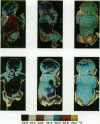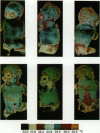Abstract
1. Infra-red Colour Thermography was used to visualize skin temperatures over seven neonates nursed in a modified temperature controlled incubator. 2. Temperature distributions were recorded on cine film which was analysed to evaluate mean skin temperatures; these were subsequently compared with values obtained from multiple, weighted measurements from a thermocouple thermometer. In all cases, there was agreement to within +/- 0 . 6 degrees C. 3. Thermograms in thermo-neutral conditions (approximately 32 degrees C) showed a temperature distribution with the warmest skin overlying the central hot 'core' and temperatures falling towards the extremities. Temperature patterns in a cooler environment (approximately 28 degrees C) showed features due to the conductive or thermogenic nature of the structures underlying the skin. 4. Multiple skin temperature recordings made at two environmental temperatures were obtained from a further twelve infants. 5. Linear regression of skin temperature against rectal--environmental difference, performed for each of the measured sites, showed that the upper arm and, to a lesser extent, the upper thigh temperatures represented the mean value most closely. The upper abdomen and head were both warmer and less responsive to environmental change than the mean skin temperature. These findings were supported by the thermographic observations.
Full text
PDF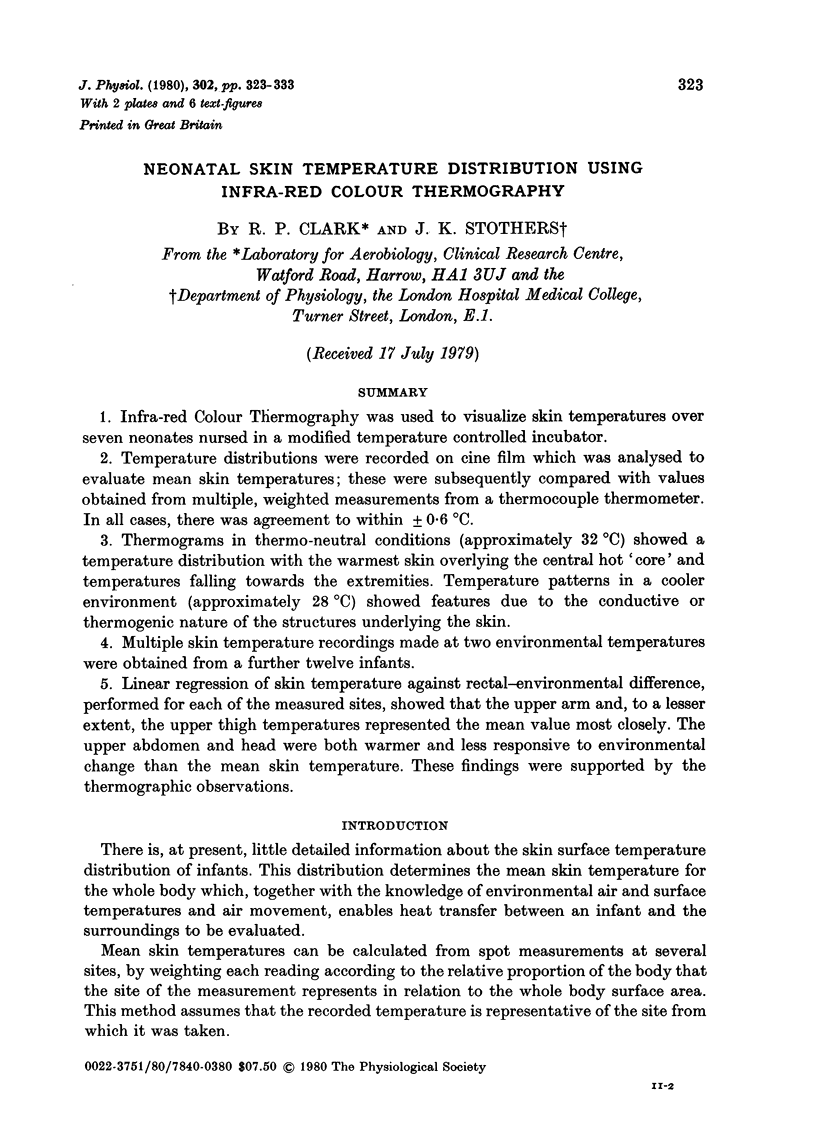
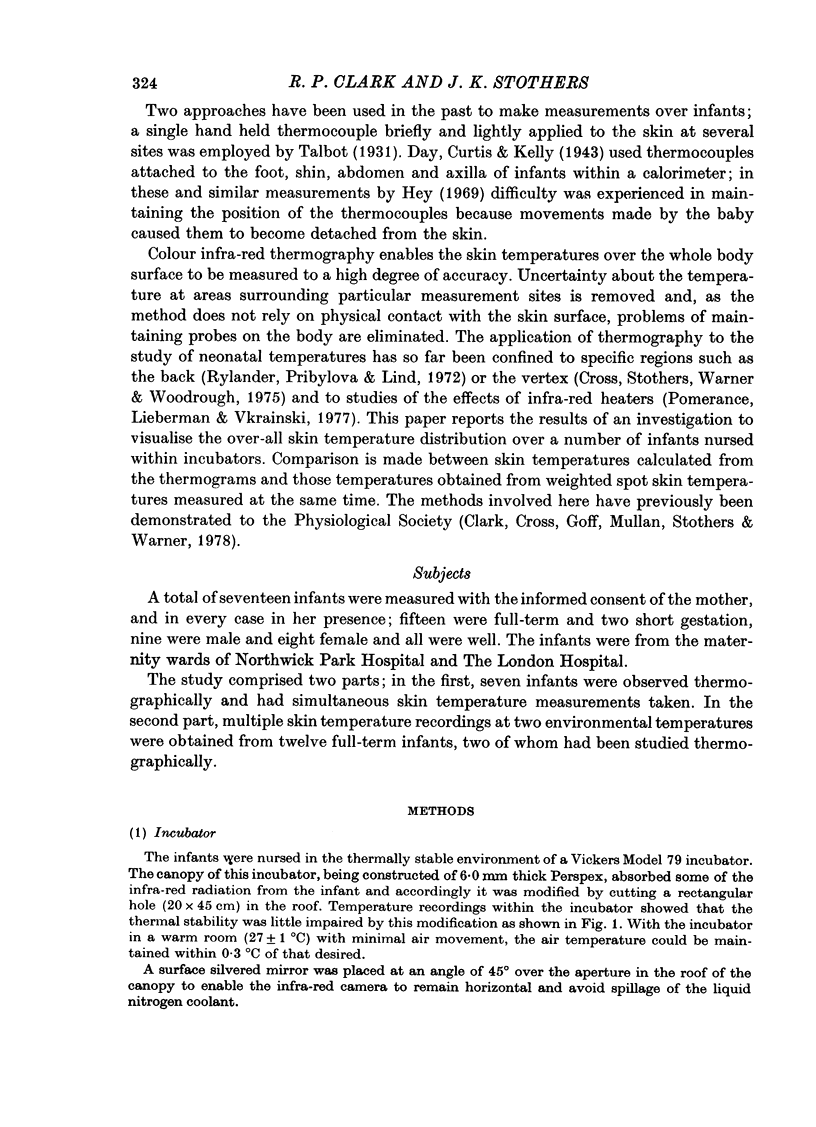
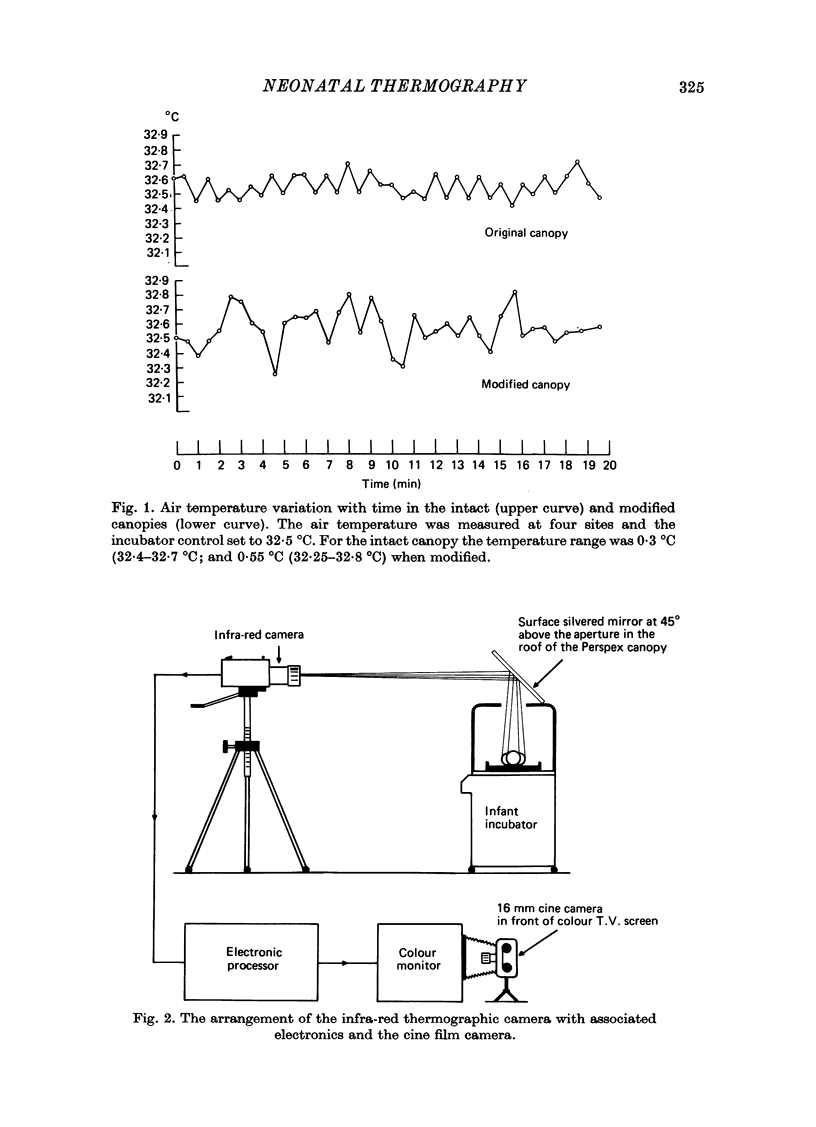
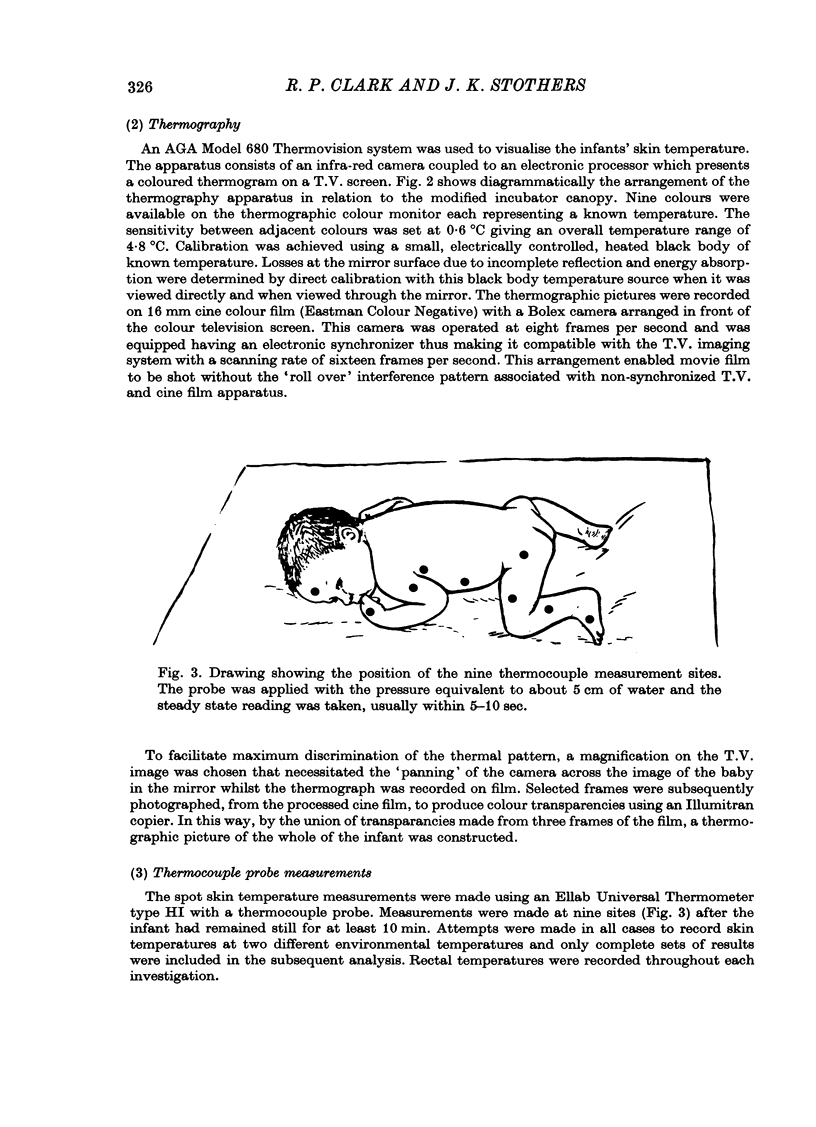
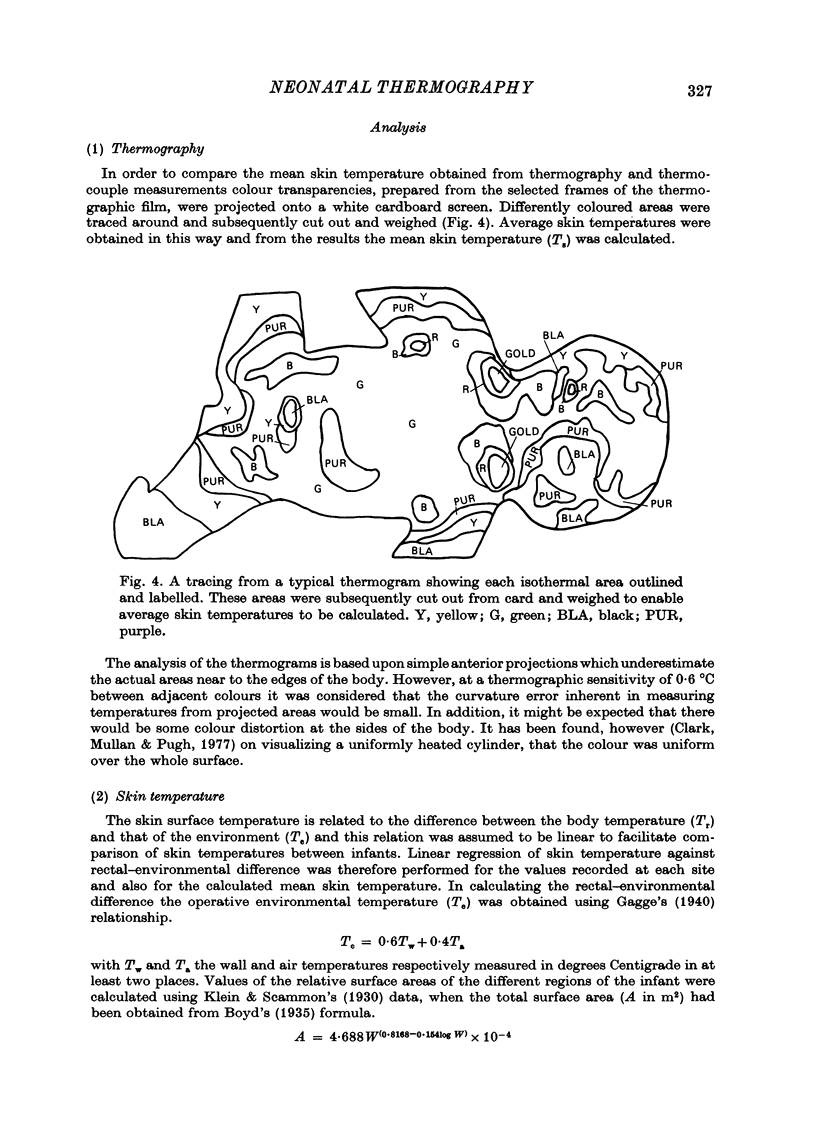
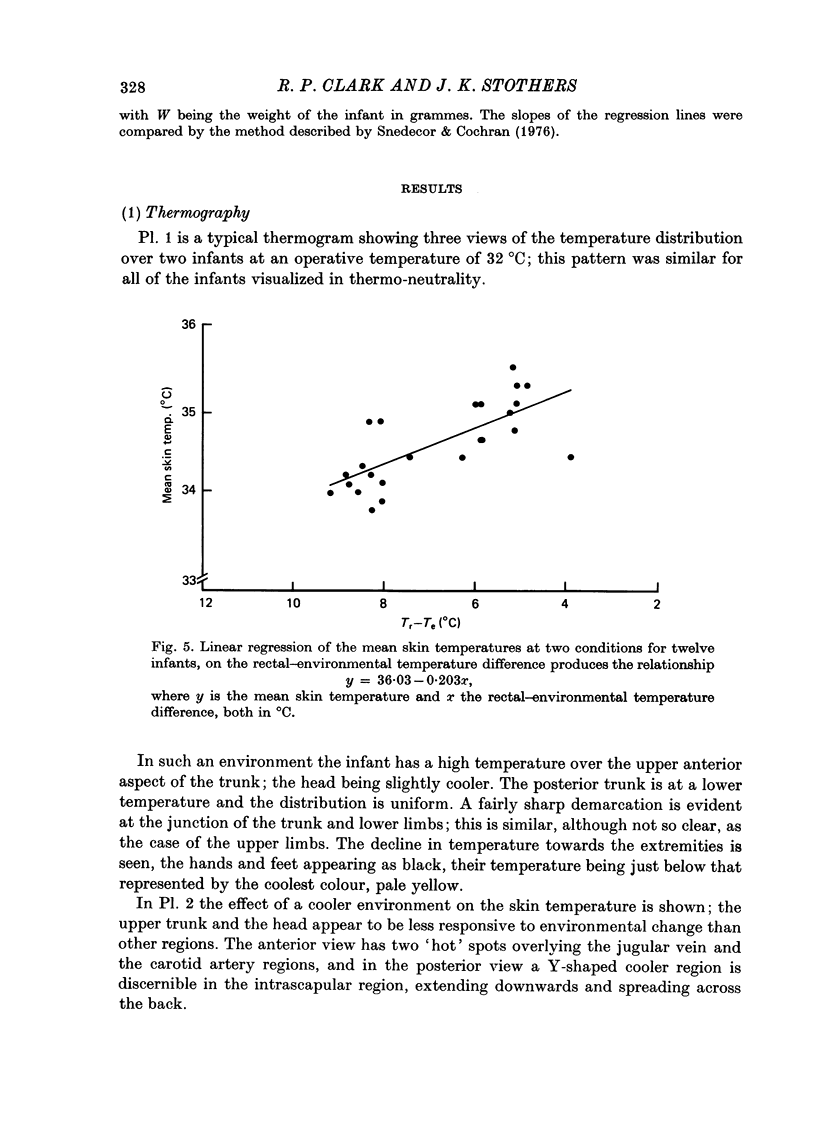
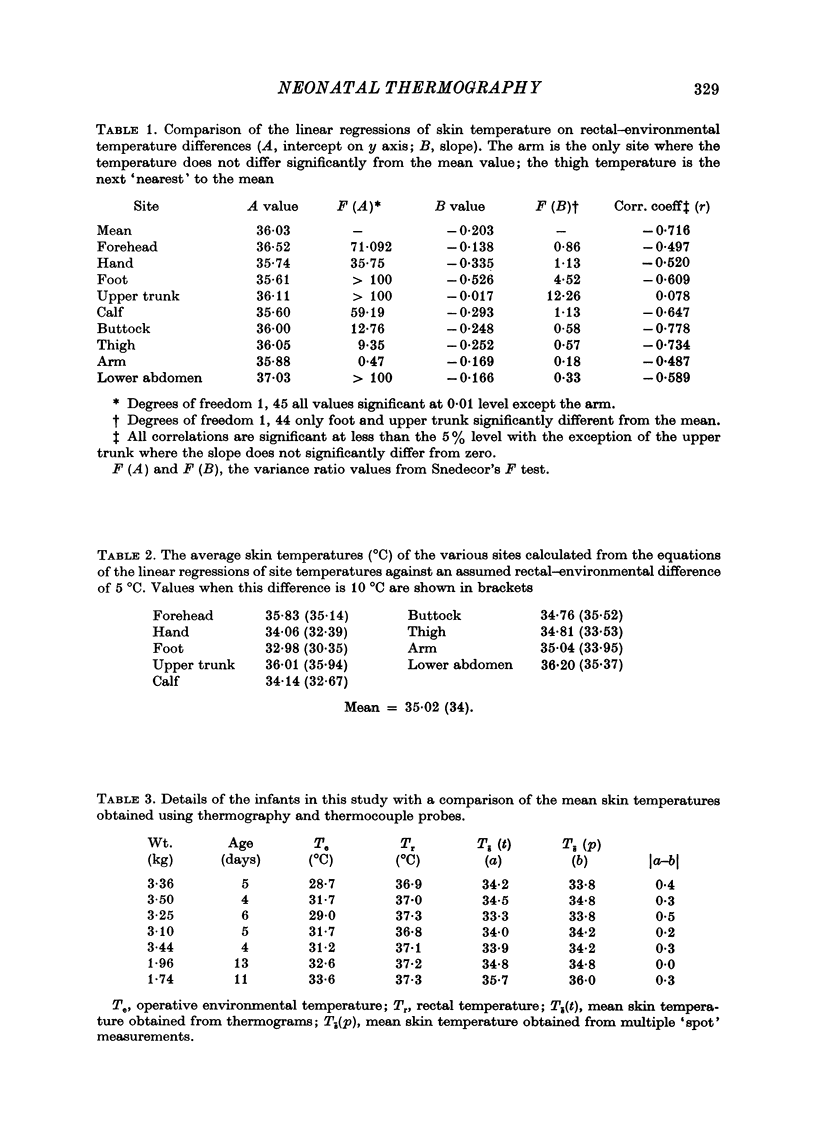
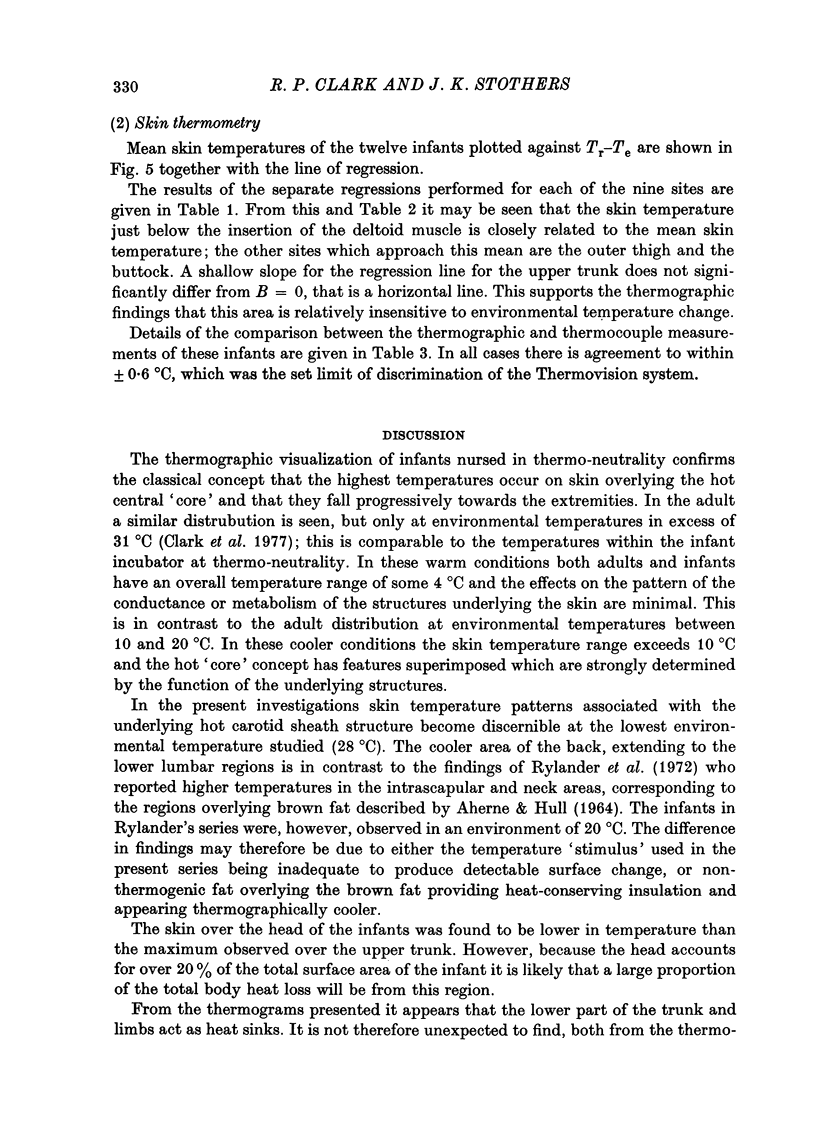
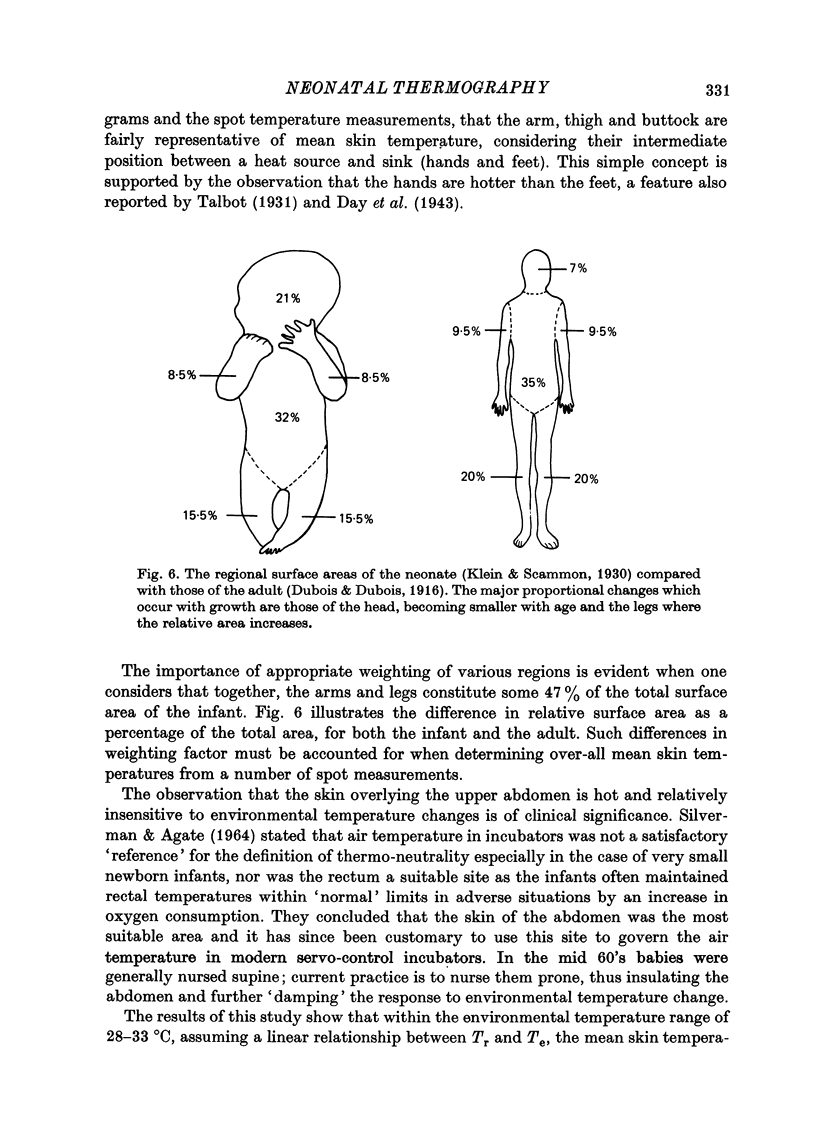
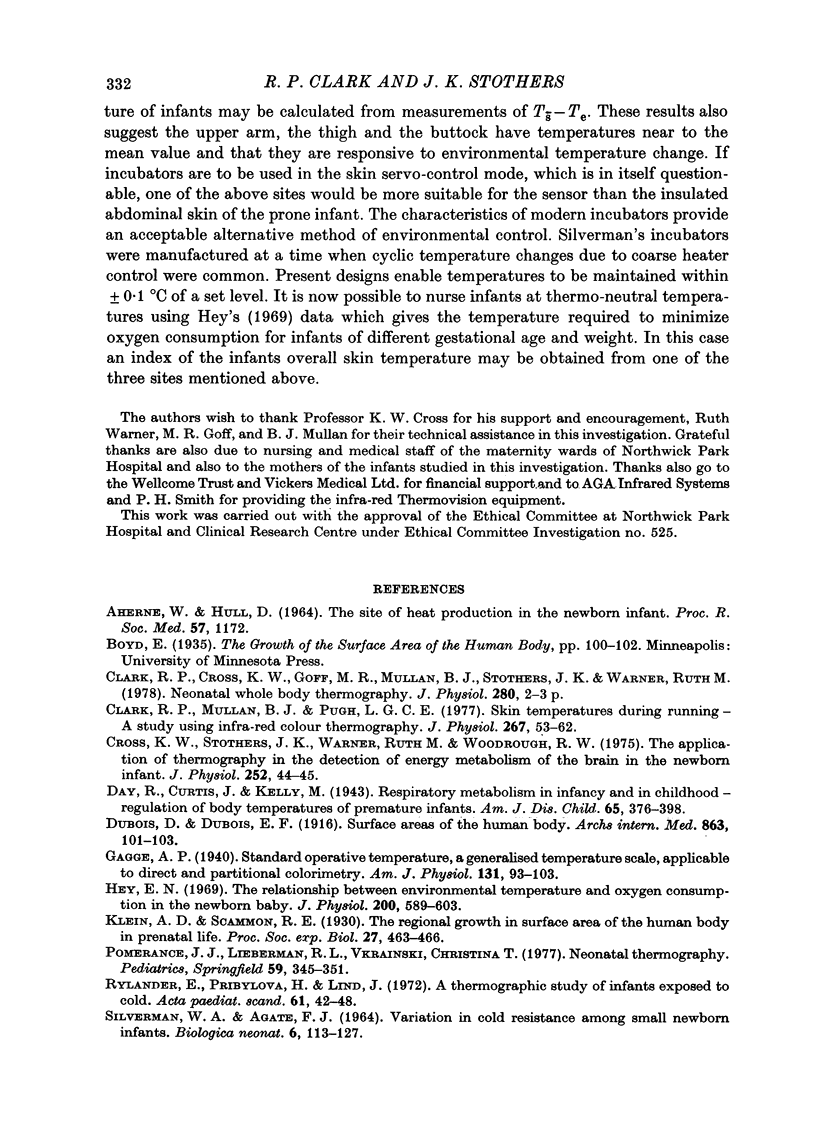
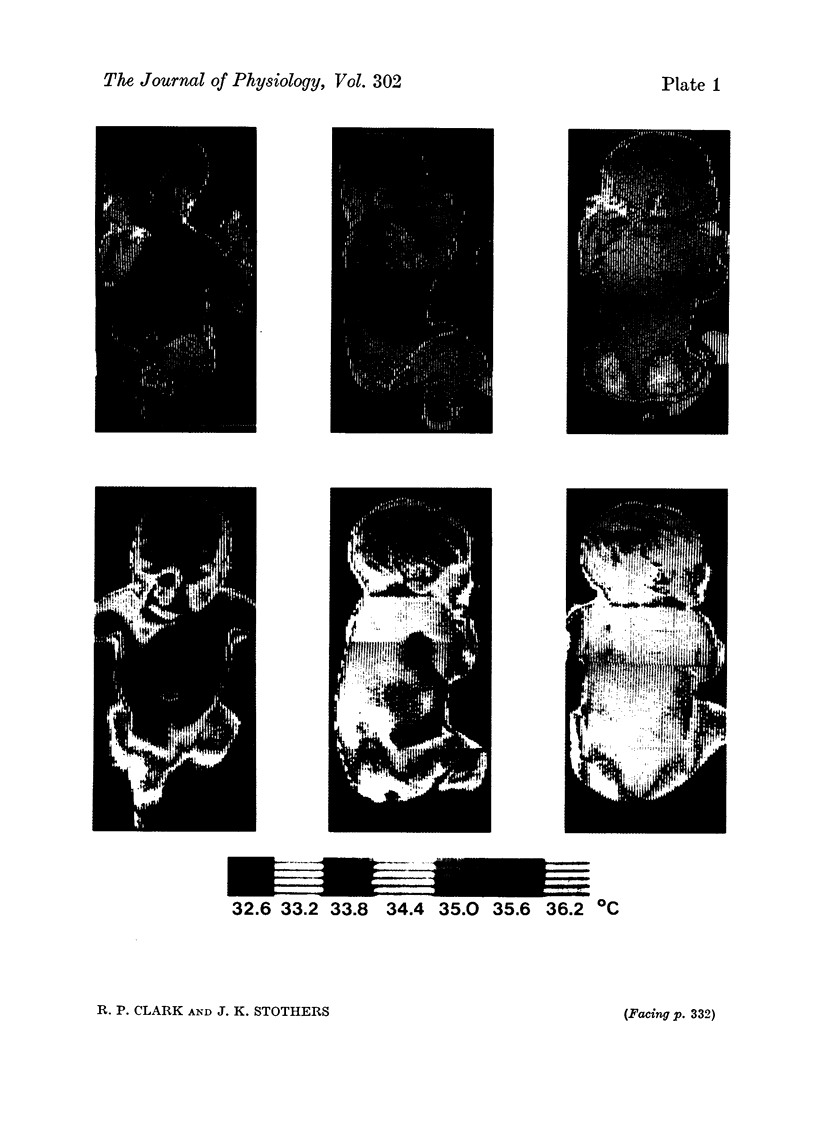
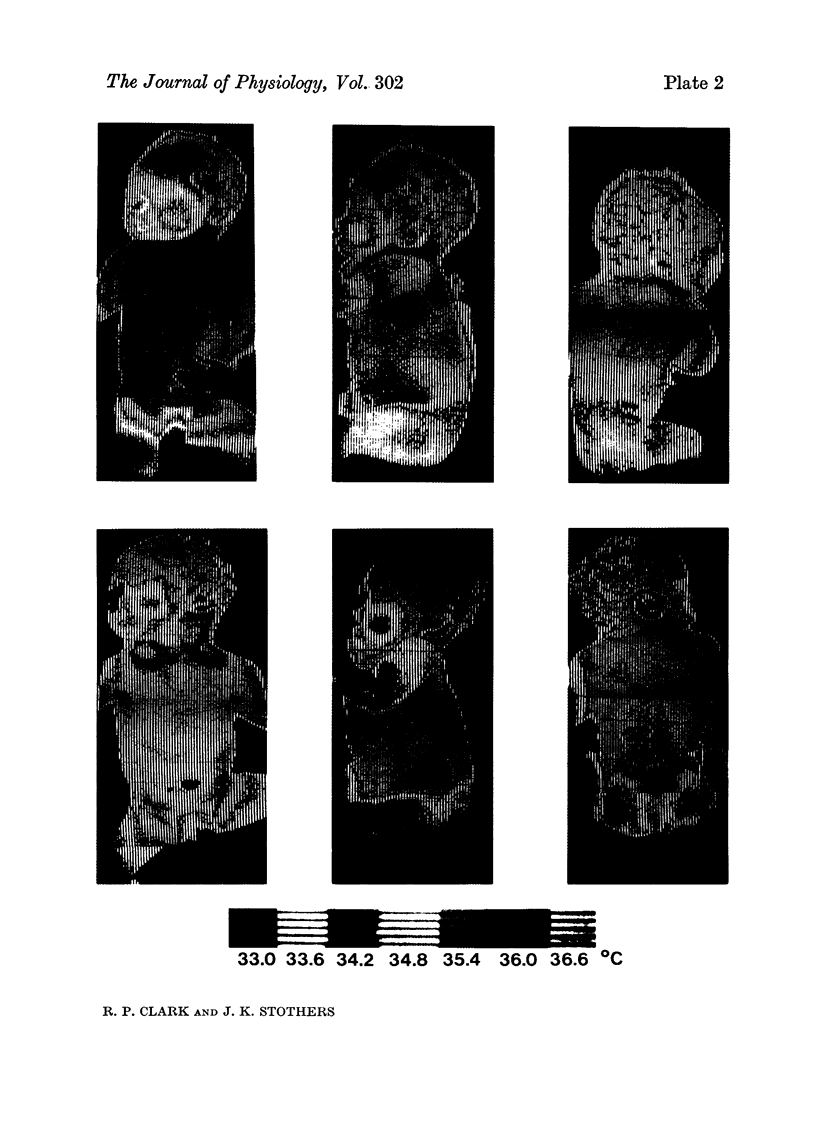
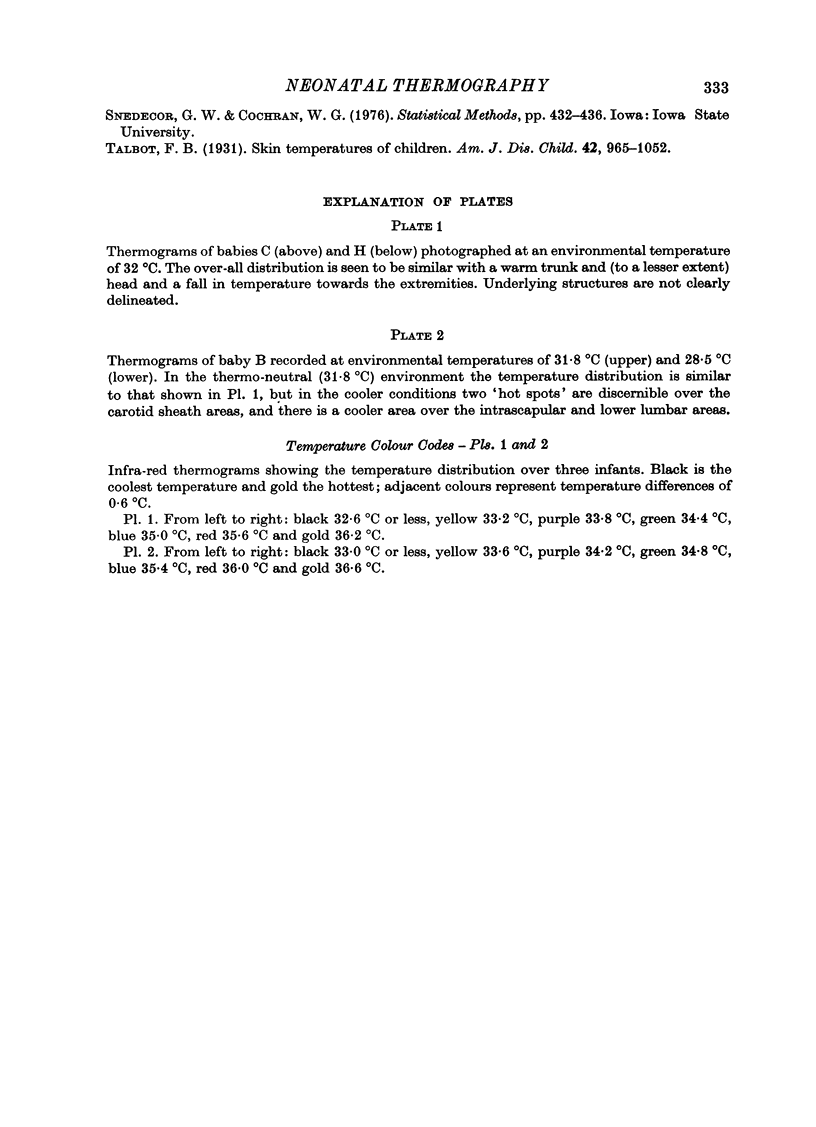
Images in this article
Selected References
These references are in PubMed. This may not be the complete list of references from this article.
- AHERNE W., HULL D. THE SITE OF HEAT PRODUCTION IN THE NEWBORN INFANT. Proc R Soc Med. 1964 Dec;57:1172–1173. [PMC free article] [PubMed] [Google Scholar]
- Clark R. P., Mullan B. J., Pugh L. G. Skin temperature during running--a study using infra-red colour thermography. J Physiol. 1977 May;267(1):53–62. doi: 10.1113/jphysiol.1977.sp011800. [DOI] [PMC free article] [PubMed] [Google Scholar]
- Hey E. N. The relation between environmental temperature and oxygen consumption in the new-born baby. J Physiol. 1969 Feb;200(3):589–603. doi: 10.1113/jphysiol.1969.sp008710. [DOI] [PMC free article] [PubMed] [Google Scholar]
- Pomerance J. J., Lieberman R. L., Ukrainski C. T. Neonatal thermography. Pediatrics. 1977 Mar;59(3):345–351. [PubMed] [Google Scholar]
- Rylander E., Pribylová H., Lind J. A thermographic study of infants exposed to cold. Acta Paediatr Scand. 1972 Jan;61(1):42–48. doi: 10.1111/j.1651-2227.1972.tb15901.x. [DOI] [PubMed] [Google Scholar]
- SILVERMAN W. A., AGATE F. J., Jr VARIATION IN COLD RESISTANCE AMONG SMALL NEWBORN INFANTS. Biol Neonat. 1964;6:113–127. doi: 10.1159/000239891. [DOI] [PubMed] [Google Scholar]



